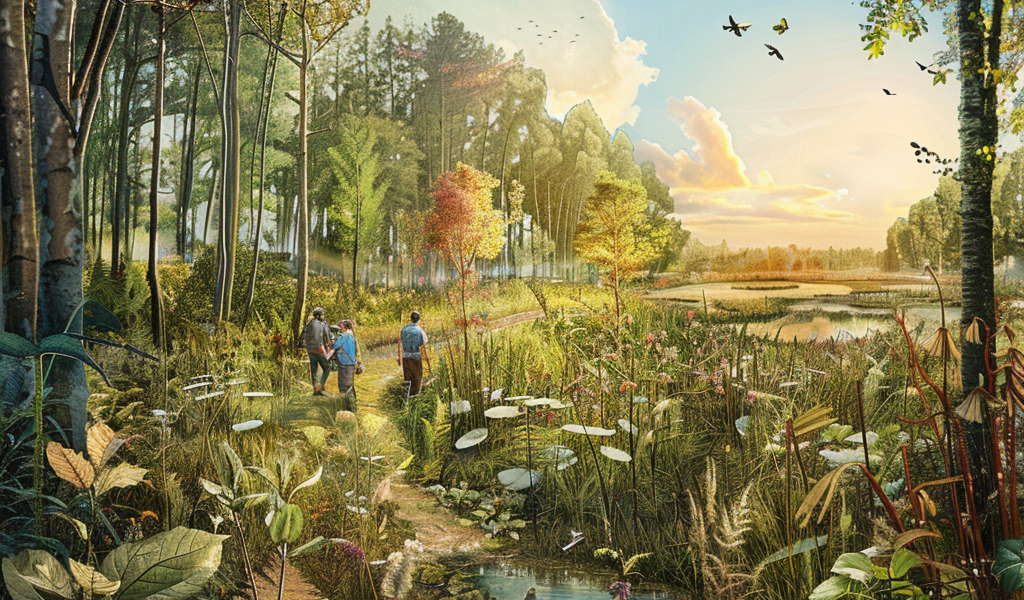Scientists Propose New Conservation Strategy to Combat Biodiversity Loss Amid Climate Change
A team of international scientists has raised alarms about the alarming loss of biodiversity worldwide due to climate change. They propose a revolutionary new approach to managing vulnerable landscapes, focusing on areas least affected by changing weather patterns. These areas, referred to as climate change-refugia, are characterized by weather conditions that favor the survival of various species and may play a crucial role in mitigating the risk of species extinction.
In a recent publication in Trends in Ecology & Evolution, researchers from Australia, Canada, the United States, and Hungary presented a comprehensive framework aimed at identifying, protecting, and restoring these refugia in the face of climate change. The paper emphasizes the need for an alternative strategy to traditional conservation efforts, which have primarily concentrated on establishing static protected areas.
Associate Professor Gunnar Keppel, a conservation biologist and lead author from the University of South Australia, highlighted the urgency of this new approach. He pointed out that the rapid pace of climate change necessitates a reassessment of conservation strategies. “Our planet is changing rapidly,” said Assoc Prof Keppel. “Events such as the widespread dieback of trees, mass coral bleaching on the Great Barrier Reef, unprecedented heatwaves, and the accelerated melting of glaciers underscore the potential for significant alterations in biodiversity and ecosystems.”
Traditional conservation methods may not effectively protect threatened ecosystems from extreme weather events. For instance, many established protected areas are proving inadequate in shielding vulnerable habitats from severe droughts and other climate-related stresses. As such, the authors argue for a shift in focus toward identifying ecosystems that are least impacted by these environmental changes.
The researchers suggest that ecosystems should be evaluated based on their resilience to climate change, particularly in terms of drought stress. Identifying these resilient areas could provide a lifeline for species struggling to adapt to the rapidly changing climate. “It is here that species will have the best chance of resisting climate change,” they assert.
However, the authors caution that without sufficient support, even species in these resilient locations may find it difficult to survive as climate change progresses. They propose various forms of assistance, such as providing limited watering to trees in valleys during extreme droughts, to help bolster the survival of these species.
The degree of management intervention required will depend on the specific capacity of each refugium to withstand the impacts of climate change and the severity of those impacts. The researchers emphasize that proactive measures are essential to ensure the survival of vulnerable species and ecosystems.
This new conservation strategy aims to create a more dynamic approach to biodiversity preservation, allowing for adaptability in the face of ongoing environmental changes. By focusing on refugia, conservationists can better target their efforts, ensuring that resources are allocated to the areas where they will have the most significant impact.
The implications of this research extend beyond just ecological concerns; they also touch on the social and economic dimensions of conservation efforts. As biodiversity continues to decline, the loss of ecosystem services could have far-reaching consequences for human communities. Therefore, integrating this new approach into conservation policies could not only protect wildlife but also safeguard the livelihoods of people who rely on these ecosystems.
As climate change continues to pose unprecedented challenges, the call for innovative conservation strategies becomes increasingly urgent. The framework proposed by these scientists could serve as a vital tool for governments, conservation organizations, and communities worldwide, enabling them to respond more effectively to the threats posed by a changing climate.
In summary, the research underscores the importance of adapting conservation practices to ensure the survival of vulnerable species in the face of climate change. By identifying and protecting climate change-refugia, we can create a more resilient future for both biodiversity and human societies.





